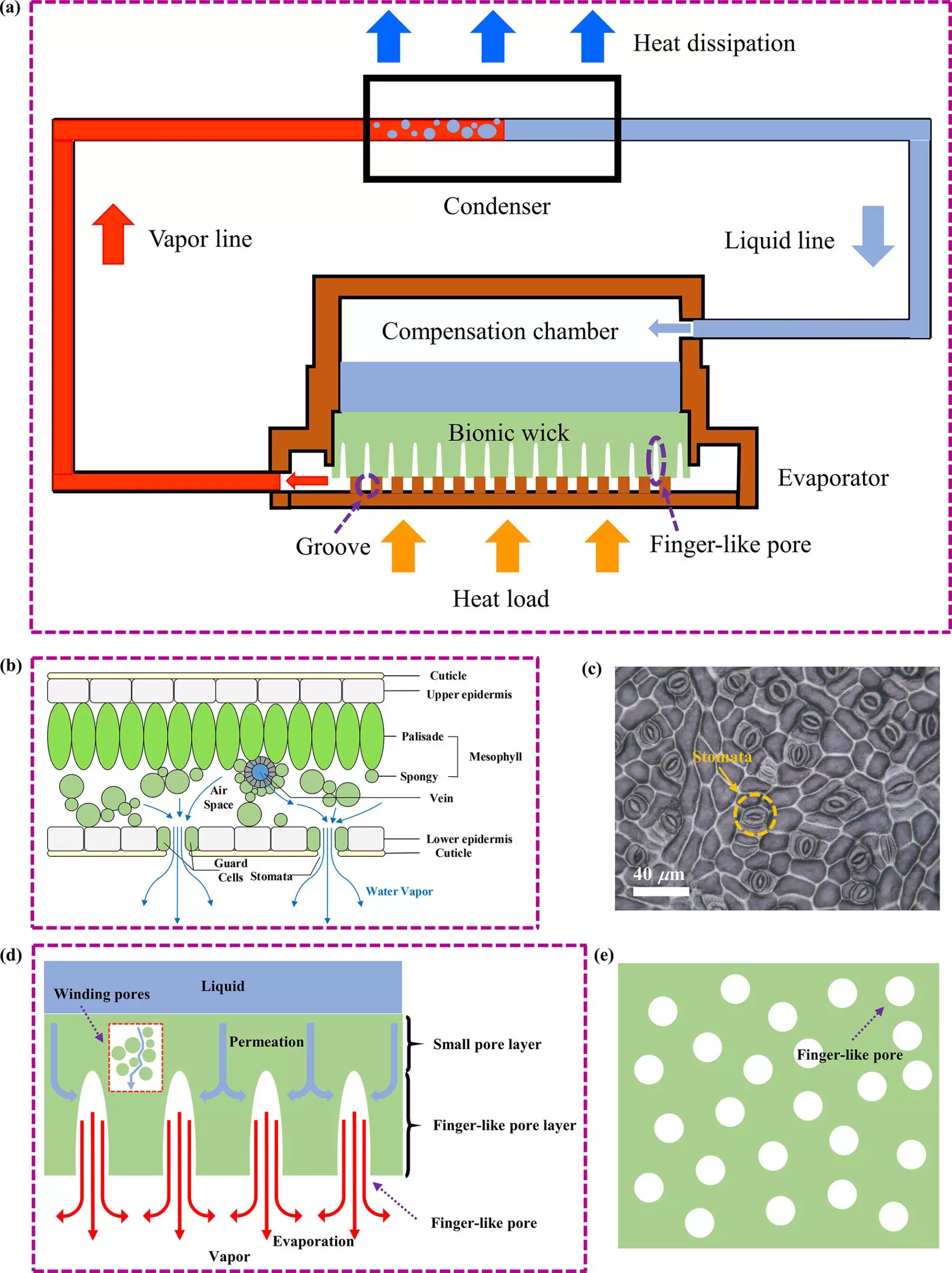In a groundbreaking study led by Prof. Ye Hong and his research team at the University of Science and Technology of China, a novel alumina ceramic bionic wick has been developed for cooling high-performance electronic chips. Drawing inspiration from the stomatal array found in natural leaves, the researchers aimed to address the challenges posed by increasing power consumption in electronic devices.
With the continuous improvement in the performance of electronic chips, there is a corresponding increase in their power consumption. This presents new challenges for cooling strategies, as traditional methods may not be sufficient to handle the heat generated. In this context, loop heat pipes (LHPs) have emerged as a promising cooling solution due to their high heat transfer capability, antigravity heat transfer, and lack of moving parts.
One of the key challenges in designing capillary wicks for LHPs lies in the conflicting requirements for flow resistance and capillary force. Larger pores are essential for reducing flow resistance for gaseous working fluids, while smaller pores are necessary to provide sufficient capillary force for liquid suction. Prof. Ye Hong’s team tackled this dilemma by mimicking the finger-like pore structures found in the stomata of plant leaves.
Through the use of phase inversion tape casting, the research team successfully created an alumina ceramic bionic wick with finger-like pore structures, similar to the stomatal array in plant leaves. These unique structures effectively increase the gas-liquid interface area, facilitating the expulsion of gaseous working fluids and reducing mass transfer resistance. The micron-sized pores surrounding the finger-like pores provide the necessary capillary force to replenish liquid at the gas-liquid evaporation interface. Start-up and operation tests of the LHP have confirmed the superior heat and mass transfer performance of the bionic wick, highlighting its potential for efficient electronic chip cooling.
The development of the alumina ceramic bionic wick not only addresses the challenge of balancing capillary force and flow resistance but also opens up new possibilities for high-power-density electronic chip cooling. With potential applications in aerospace, aviation, and microelectronics fields, this innovative solution could revolutionize thermal management practices. The integration of bio-inspired designs in engineering solutions offers a promising avenue for addressing complex challenges in various industries.


Leave a Reply